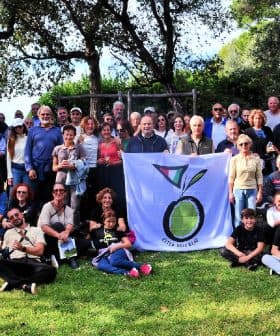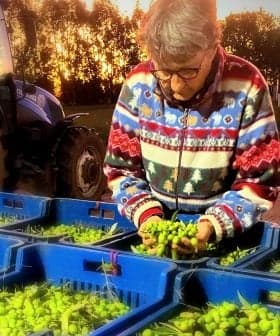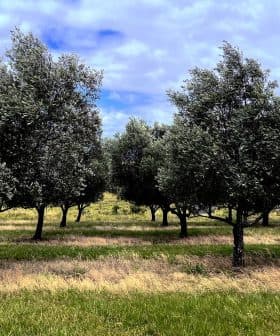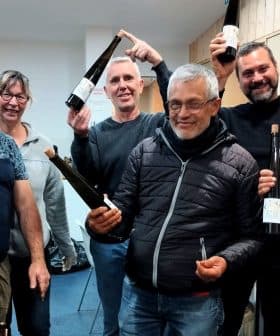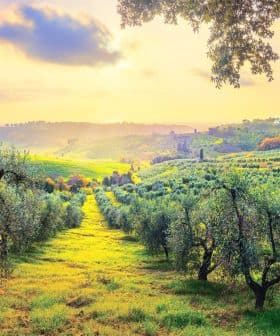Italy Unveils Plan to Revitalize Sector
A plan for thousands of new groves, funding initiatives and an interprofessional association proposes a fresh course for Italian olive oils.
 Maremma, Italy
Maremma, Italy The Italian olive oil sector is undergoing a comprehensive relaunch with the introduction of the National Olive Plan draft, aiming to increase production volumes and reduce costs through public support and restructuring. The plan also focuses on strengthening the supply chain, fostering collaboration between operators, creating an interprofessional organization, and implementing a new quality certification system to enhance the recognition and sustainability of top-quality extra virgin olive oil in Italy.
The Italian olive oil sector is preparing for a comprehensive relaunch as the government unveiled its new National Olive Plan draft.
Patrizio Giacomo La Pietra, deputy secretary at the Ministry of Agriculture, Food Sovereignty and Forests, said the top priority is to restore larger production volumes after years of steady decline.
With 244,000 tons projected for the 2024/25 crop year, Italy is now poised to rank fifth among the major Mediterranean producers, behind Spain (1.3 million tons), Turkey (450,000 tons), Tunisia (340,000 tons) and Greece (250,000 tons).
See Also:Despite Costs, Italian Olive Farmers Continue Organic TransitionWhile the plan is still under development, its draft focuses on strengthening the entire supply chain: supporting olive oil mills, encouraging the creation of new cultivation areas and addressing the widespread abandonment of olive groves.
Presenting the plan to olive sector associations, La Pietra explained that the main goal is to increase Italian olive oil production by 25 percent over the next ten years.
The government aims to reduce production costs by at least 20 percent within the same time frame through public support and restructuring.
“At the ministry, we are working to reactivate the supply chain roundtables, which have been inactive for years, starting with olive oil,” La Pietra said. “We believe that there must be a shared strategy and organizational commitment before investing.”
Fostering greater collaboration between operators, including shared infrastructure, coordinated decision-making and improved training of seasonal workers, will be key to cutting costs.
Renovating existing infrastructure, researching new methods and technologies and modernizing the sector are essential to achieving these goals.
One of the most praised measures is creating an interprofessional organization for the olive oil sector.
Like successful models in countries like Spain, this body is seen as vital for uniting stakeholders and pursuing common objectives.
According to La Pietra, the interprofessional organization will “operate ‘erga omnes,’ requesting contributions from all parts of the supply chain based on marketed product volumes, to establish a fund for promoting extra virgin olive oil.”
“We must agree on action plans at the table and within the interprofessional organization. Otherwise, as has happened in the past, initiatives risk remaining only on paper,” he added.
Anna Cane, president of the olive oil group within the Italian Association of the Edible Oil Industry (Assitol), welcomed the plan.
“We all need to hit these targets. If we want to be competitive again, higher production volumes at reasonable costs are essential,” Cane remarked, emphasizing the crucial role of innovation.
Production may be struggling, but extra virgin olive oil remains highly popular across Italy.
According to data from the Nomisma/Il Sole 24 Ore Observatory, 89 percent of Italians consider extra virgin olive oil superior to other fats. Seventy-nine percent believe it is healthier than alternatives.
Thirty-seven percent of a national sample of 1,000 people said they would like restaurants to offer a selection of olive oils, as is common with wine.
The survey also revealed a strong interest in learning about extra virgin olive oil: 40 percent are interested in tastings and sensory classes, and about 30 percent seek olive oils in specialized stores, including online shops.
Interestingly, 54 percent of buyers choose olive oils based on geographic origin, with a growing preference for products with a Protected Designation of Origin or Protected Geographical Indication certification. These certifications guarantee production in specific areas under strict protocols.
Given their success, the national plan may include a new certification. Proponents say it would enhance recognition of top-quality extra virgin olive oil.
This new national quality system, labeled SQN-OAQ, will also highlight sustainability.
While 96 percent of Italians see extra virgin olive oil as a national treasure, only 20 percent know that most olive oil production follows circular economy principles.
Nomisma analysts suggest that increasing this awareness could lead 81 percent of consumers to buy more extra virgin olive oil.
The survey also found that about one-third of Italians fully understand the unique characteristics that make extra virgin olive oil special, such as its phenolic profile.
“We are not surprised that only 37 percent know more about extra virgin olive oil’s health benefits,” Cane said.
“The National Olive Plan is the perfect platform to launch a broad communication campaign,” she added, pointing to the need for food education to begin in elementary schools.
In addition to the plan, several initiatives are underway to support the sector.
La Pietra confirmed to OlivoNews that about €80 million will soon be allocated to the olive oil mills excluded from the last round of funding due to insufficient resources.
New resolutions by the Italian parliament recognize the critical role of olive oil millers.
According to Elia Pellegrino, president of the Italian Olive Oil Millers Association (Aifo), these resolutions acknowledge that millers “play an essential role in ensuring the best quality of Italian extra virgin olive oil.”
The resolutions also address updating the 1996 law governing the disposal of vegetation water produced during processing. Advances in science and technology have opened up new ways to manage and reuse these byproducts.
“We also appreciate the government’s commitment to promoting, at the European level, an amendment to the Common Market Organization (CMO) for olive oil, following the successful model of the wine CMO,” Pellegrino wrote in a note sent to Olive Oil Times.
“The creation of stable and permanent resources for investment and promotion is essential to strengthen Made in Italy and counter growing competition,” he added.
The plan’s key provisions include supporting the recovery of Apulian olive groves devastated by Xylella fastidiosa over the past decade. Southern Puglia remains Italy’s most important olive oil-producing region.
One measure includes support for developing 5,000 new hectares of Xylella-resistant olive groves.
Beyond Puglia, much remains to be done in a country where diverse microclimates and soil conditions create unique farming landscapes.
“Olive farming in Italy is highly diverse. Some regions have intensive orchards, while others maintain traditional ones,” Stefano Caroli, president of the Apulian Olive Oil Millers Association (Afp), told Olive Oil Times.
“In hilly or mountainous areas, olive orchards are part of the local heritage. When neglected, they neither produce olives nor contribute to environmental health as they could,” he added.
“We need to assign the right value to olive oil, meaning prices must sustain olive growing,” Caroli said, emphasizing the need for new commercial policies based on origin and production practices.
La Pietra estimates that 500,000 hectares of olive groves are currently abandoned across Italy.
“We need to identify which can be brought back into production and which require special protection for their role in the landscape,” he said.
The sector’s associations must submit their proposals to the Ministry of Agriculture by September for the final discussion of the plan.
Share this article


